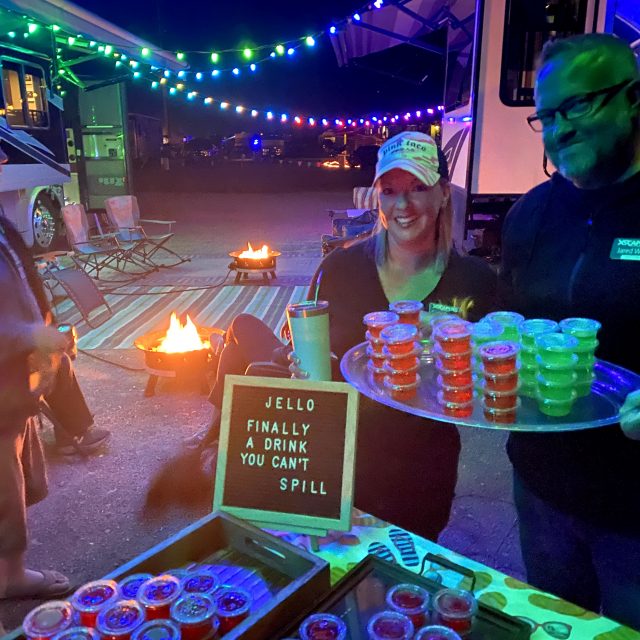Sustainable Full-Time RVing: One Couple’s Quest for Sustainable Travel
Simply is, as simply does. Living life in an RV, van, or converted school bus can be simpler and more sustainable; but, in our nearly 10 years on the road we’ve seen folks really struggle to leave their complicated lives behind. We’ve even struggled with this a bit ourselves.
A former colleague told us that living sustainably involves a deep examination of wants vs. needs. That’s worth repeating at a cocktail party, but what does it mean exactly? My wants and my needs aren’t going to work for everyone else. These are deeply personal concepts that take a lot of hard work to sort out.
In our former sticks-and-bricks home, we gave up the New Year’s Resolution nonsense and made a “green” goal for each year. By focusing on one thing, like composting all our food scraps, it became a habit by the next new year. We reduced our energy usage, downsized our needs, recycled, reused and repaired every chance we could. Unfortunately, it just never quite seemed like enough.
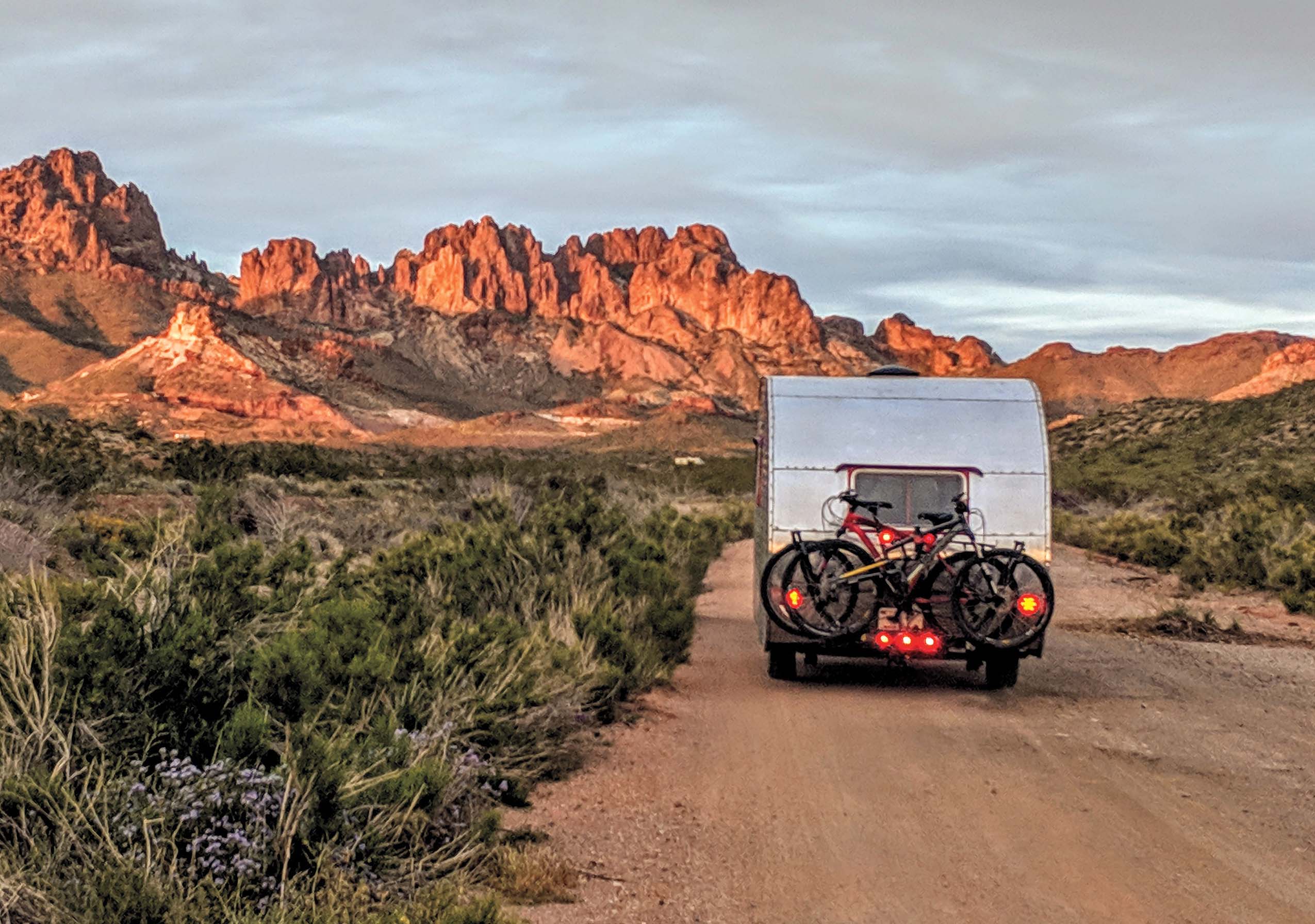
Our escape plan involved bringing new life to a worn-out vintage trailer that had been retired from “deer camp” service. For $900 on eBay we snagged this 1957 Sportcraft, canned-ham travel trailer we named “Hamlet,” and spent six months and around $2,000 bringing him back to life. What we saved in supplies, we more than made up for in labor—a labor of love, blood, sweat and a few tears.
Seizing the opportunity to explore all 50 states, as well as much of Canada and nearly all of America’s national parks, we’ve come close to truly feeling like we’ve got it all. All that we need, that is. But we’ve also realized that “living sustainably” goes beyond a carbon footprint; it includes having time to do the things we love and spend time with the people we love. It means living a more healthy and curious life, pursuing interests for their own sake rather than monetary gain or career advancement.
Environmental Sustainability as An RVer
How does a lifestyle which involves driving your house everywhere help lessen your carbon footprint? That’s a fair question, and one that we’ve frequently gotten from our seminar attendees. When you compare our current lifestyle to the average, American household, the picture becomes more clear.
Gasoline
Even with all the traveling we do, all the times we’ve crossed the Mississippi, we still drive about half the number of miles of the average American couple. Most individual drivers put about 14K miles on their vehicle annually, 28K per couple. Together (the two of us in one vehicle), we average about 16K. When we stay somewhere for a season, we try to walk, bike or take public transportation as often as possible. Are you amazed that the daily commute and soccer practices can rack up more miles than cross-country travel? We sure were.
RVing with Solar Power
We use the power of the sun to run our lives.
For the past 10 years, we have lived, worked and traveled with a very small portable solar powered system. The total cost of our first system was less than $1,000, which is significantly less than what the average American spends annually for electricity. Most households spend about $1,400 per year for electricity for their home (much of which is still coal powered), using nearly 11,000 kWh.
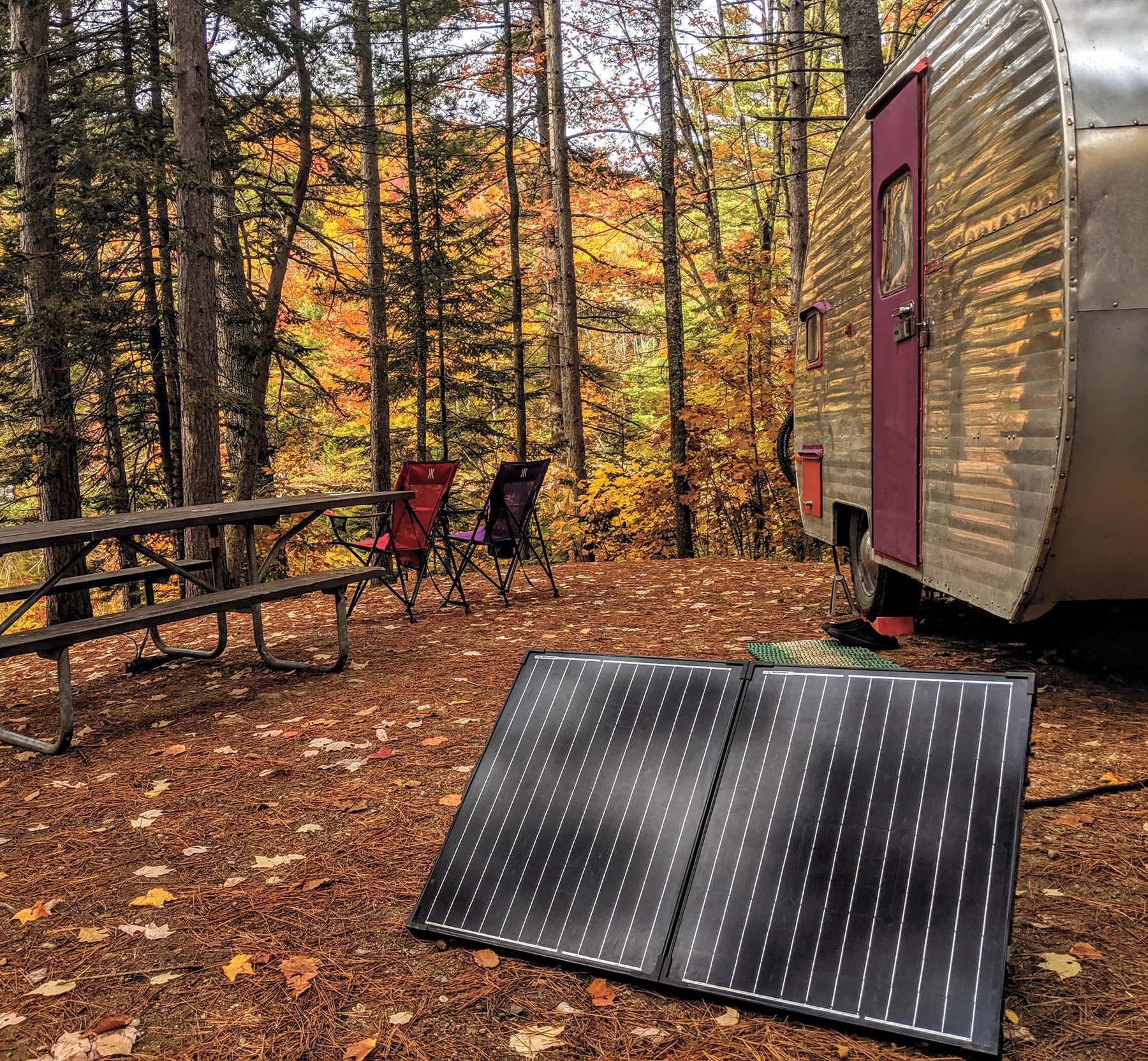
We now have 200 watts of panels on Hamlet’s roof, an MPPT charge controller, a 100Ah Lithium Iron Phosphate battery and a 700W inverter. We have a portable panel in case we are parked under a forest canopy. This will allow us to camp in the shade with our panel in the sun. Admittingly, by most RVers standards, our system is still pretty tiny, though it meets our needs for ourselves and our growing mobile business.
Cooking & Heating as Full-time RVers
As vegetarian foodies, we love to cook with a propane stove and over a campfire. We don’t care for electric stoves, microwaves, electric coffee makers or even a toaster. Instead, we save energy and a great deal of money by using a flat top griddle, French press and the amazing Banks Fry-Bake, which serves as both a skillet and oven. We use about 25–30 gallons of propane for cooking and heating, costing around $150 per year. Compare this to the $4,500 most Americans spend using about 1,500 gallons!
How Little Water Can RVers Consume?
American homes use around 300 gallons of water per day. Shocked by that statistic? Because we choose to shower two to three times per week, wash dishes in our small tubs, wash clothing only when needed and rarely use flush toilets, we estimate our water usage at about five to six gallons per day.
Getting Out of Debt and Into Financial Sustainability
Getting out of debt is a major factor in living sustainably. We worked hard to pay off debt early in our lives. We have investments for the future and continue to contribute to our retirement accounts. Getting free from debt wasn’t easy to do, but the payoff has been huge, especially while living on the road.
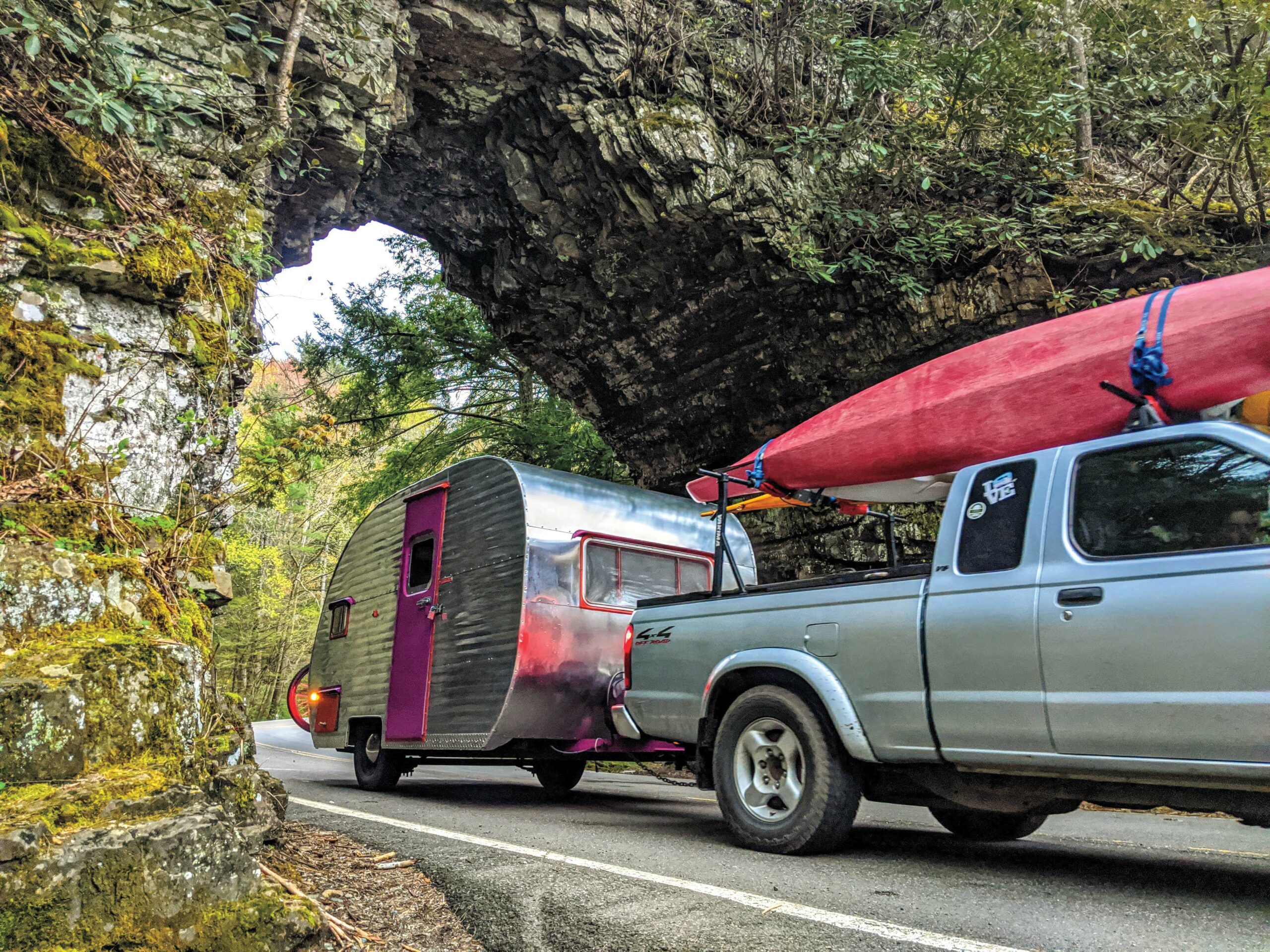
By reducing our “life overhead,” we don’t need to work 12 months out of the year. We thrive on about $26K per year (for the two of us)! Between seasonal and online work, we can make this in about four to five months. The rest of the time can be spent volunteering, traveling, and visiting friends. Overall, we estimate that we’ve spent about $1,050 per year for our rolling tiny home. This includes the initial cost of the camper, maintenance, annual registration, the solar-powered system, and annual camping fees. A traditional home in the U.S. is about $344K, and living expenses (mortgage/rent, utilities, taxes, furnishings, maintenance) are around $25.5K annually. Keeping our costs low isn’t rocket science, we simply go back to where we started—we examine our wants against our needs. If we don’t need it, we simply don’t buy it, and when you live in 72 sq. ft., not much fits. We use the outdoors as our playground and human powered adventure as much as possible when we are exploring the natural world. Having such a small space encourages us to spend most of our time outside. Since we run completely on solar, we camp in national forests and on BLM land, instead of the more expensive options. We also do work-trade on farms, volunteer with a variety of organizations, as well as help friends along our journey.
Personal Relationships on the Road
Overall, this traveling lifestyle has given us the gift of time. And it’s time we can spend more freely with those we love. With this time, we can better take care of ourselves, sleep more, pursue activities which give us energy, be outside more and give back to projects we believe in. Even during the height of covid-19 in the U.S., we were able to stay safe and still stay connected, although at a distance.
We’ve also had extended visits with our aging parents. These visits help us have a closer and more real relationship, more so than only spending time with them during holidays and extended summer weekends.
Also, we’ve been able to give back to them by helping with house projects and checking in on how they’re getting along. We’ve actually spent more meaningful time with our parents than when we lived in the same town. Our growing network of family and friends across the continent is helpful because we can drop in on their lives and get to know their kids, make them dinner, help them with a house project or two and maybe get a shower in the trade. It keeps the relationships strong, and the connections and positive love in our lives powerful!
What Sustains You?
We feel like we’ve gotten really close to having it all, by our own standards, of course. We’re not sure if we have we made it there but time will tell. We know that we feel more in love with this big blue planet and more in love with each other than when we first hit the road in 2012. Though there are very few regions of the country we haven’t explored, each time we turn a corner and discover something new, some place beautiful about which we knew absolutely nothing, we feel that same thrill that spurred us to first pull out of our driveway.
Did you like this post? Pin it on Pinterest!
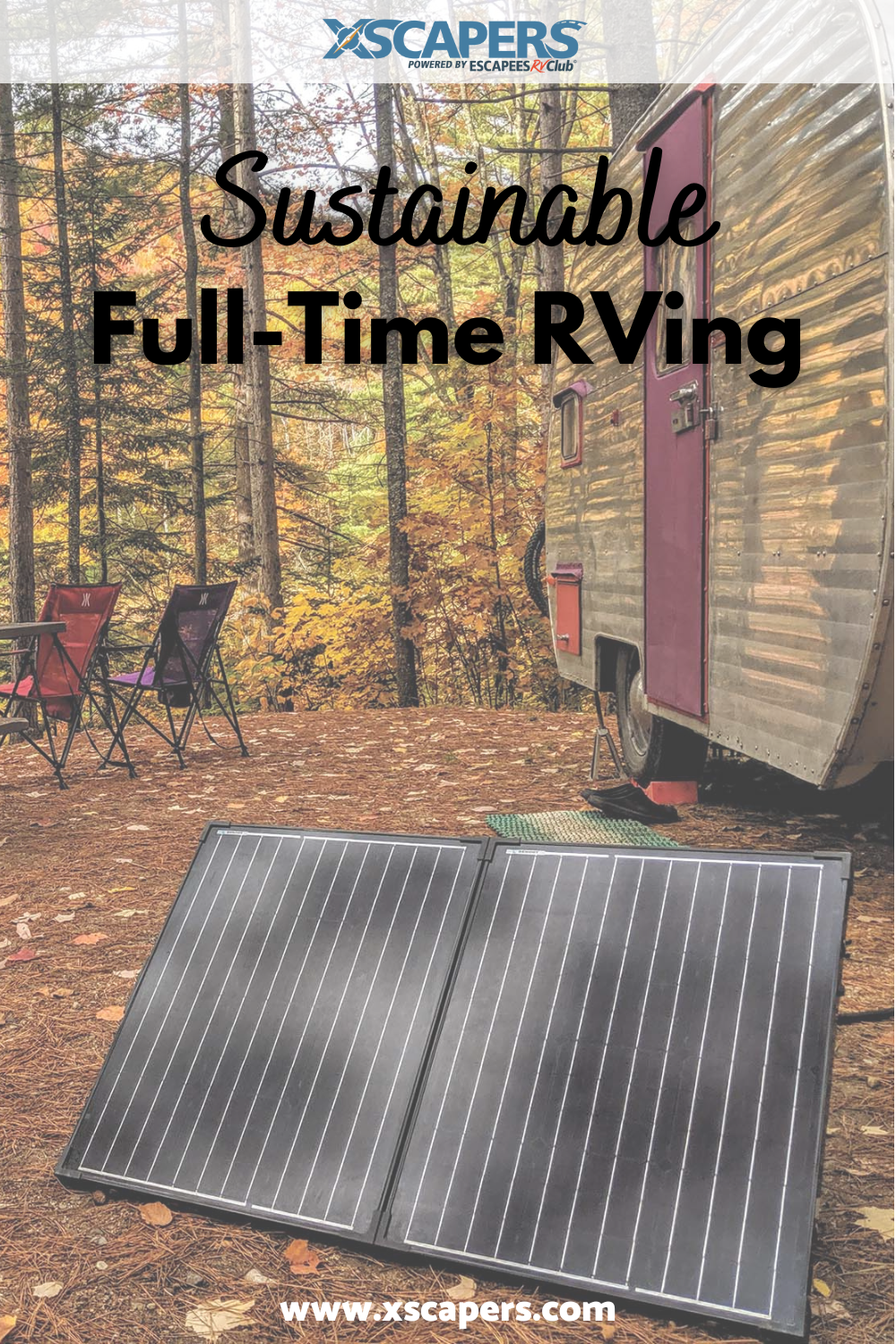
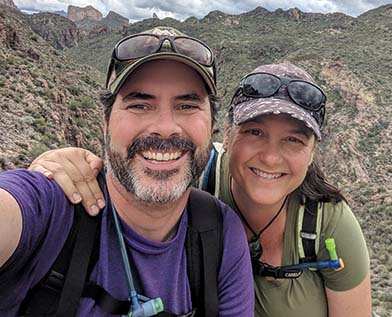
Authors
Shari Galiardi and David “Hutch” Hutchison
Shari Galiardi and David “Hutch” Hutchison, together with their 1957 canned ham camper named Hamlet, are Freedom in a Can (freedominacan.com). For nearly a decade, they have enjoyed full-time roadlife, explored North America, and parlayed their higher education backgrounds into a mobile business of writing, inspirational speaking, photography, and video production. freedominacan1957@gmail.com

 Previous Post
Previous Post